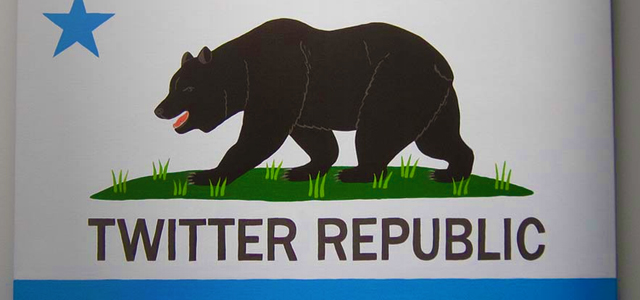“Investing in a conversation”

About six months ago, Twitter hired Jason Costa, a specialist in developer relations and a former Googler. Around the same time, the company also saw the return of co-founder Jack Dorsey, who has something of a heroic stature among Twitter third-party developers.
“Jack – he’s a developer,” said Sarver, with perhaps an inkling of good-humored chagrin. “He came from that world and built two awesome businesses out of it. He shows the core part of the company understands and is committed to developers.”
With Costa and a handful of others on hand to help Sarver iron out the community kinks, “We were able to be a lot more proactive about setting up events and investing in that conversation,” Sarver said.
In fact, Twitter is gearing up for a developer tour that will take it outside of its comfort zone — and outside of San Francisco — and bring it into contact with a much wider audience. “We’ve done so many events here, but there’s community everywhere,” said Sarver. “Developers, investors – all those markets.”
But Sarver’s daily bread as its platform chief is all about monitoring ripples in the developer ecosystem. “Every day, that’s what our team is focused on: How what we do will affect the ecosystem and all of our partners.”
Once the developer advocacy team was in place, Sarver said the real fence-mending work started happening.
“Once we were able to actually solicit feedback, Jason started calling developers on a weekly basis,” he said. “We got tons of information. Jack started a thread to get feedback. We aggregated that into five top themes, listed them and put an action plan in place for how to address them.”
As I listen to Sarver, I notice a new specificity that hasn’t been present in our past communications over the past couple years. “We committed to all the API changes having a minimum of 30 days between a notification and making the change,” he told me.
“It’s all about getting the right people to support this stuff – community management tools, better documentation. … We offer a lot of channels, we have a dedicated forum for answering questions, regardless of who is asking it. There’s some limit in the number of people we can talk to on a daily basis, but we try to support everyone as much as possible.”
Of course, some developers have long been asking for the impossible: A complete disrobing of Twitter’s roadmap. And as much as I sense Sarver is willing to help and communicate with external developers, that item on the wishlist ain’t gonna happen.
“That’s the constant back and forth – we just need to give the best guidance we can,” he said. “We can’t put out a complete roadmap for competitive reasons and because roadmaps change. The best way to go about it is to give directional guidance, to give some boundaries that people can build up to.”
“Investment in the ecosystem”

Therein lies the million-dollar question: With LeMeur, Everett and scores of others standing as examples of how not to use the company’s APIs, how, then, can one safely, profitably build a business on Twitter? How is a developer to know that she isn’t suddenly going to be jilted when Twitter decides to go in a new direction?
If that question could be answered in one word, that word is “enterprise.”
Dick Costolo is the company’s relatively new CEO, and he brings a seasoned, trustworthy voice to Twitter’s leadership. When he said over breakfast at Twitter HQ last month that Twitter wasn’t getting into enterprise solutions, I mostly believed him.
“I get a million emails a day about what Twitter could be doing to make more money,” Costolo said. “But … the advertising business will sustain us. We have no intention to scale the data licensing business. It’s important to us that third parties have access to the data. We’re just going to focus on scaling the advertising business.”
Also, Sarver gave a broad hint when he told me, “We try to optimize for the most benefit for our end users.”
In other words, hearkening back to the infamous March memo, the advice for developers is this: Don’t build Twitter clients, but more specifically, don’t build features for the average consumer; instead, focus on business uses that Twitter is not going to pursue itself.
Twitter is still very much experimenting and optimizing its services for ordinary consumers, and the company doesn’t want to have to crush you when it launches a feature that duplicates the entire functionality of your app. But if it has to, it will.
For clarity’s sake, I asked Sarver to outline some areas where developers are absolutely, 100 percent safe in creating Twitter API-powered businesses.
“Analytics is a huge sector for us, obviously,” he began. “Finding those insights you can bring to brands using this real-time corpus of data.” He also mentioned curation (“finding the key tweets to talk about events that are happening, be that the elections, the Olympics, etc.”) and publishing (“figuring out the right content that will resonate with the audience”) as possible areas for investment and development.
Sarver also added that Twitter’s ecosystem is still financially robust, despite the online brouhaha. “During December 2010 through May 2011, we added up all the investment in the ecosystem, and it was around a half billion dollars, and during the same period, there was around a billion dollars in exits,” he said.
Twitter already offers some analytics, but sources say these might end up centering largely around the ads brands place on Twitter itself, leaving the company’s metrics around unpaid tweets and engagement sparse and open for opportunity.
“Analytics is not a zero-sum game,” said Sarver. “It’s way leveled up from what we offer. We hear from brands all the time that they’ve been looking for more ways to get data out of Twitter. Even though there are a bunch of solutions out there, they still want more.”
Finally, he reiterates the kindest-worded warning Twitter could ever communicate: “We’re going to invest heavily in the core consumer experience, and we want to see the ecosystem focus on those other areas of opportunity.”
That might just be the clearest directive the company has ever given to its third-party ecosystem. Stay away from the core consumer experience, and Twitter will continue to show you the love. Cross the line, and you have only yourself to blame if it rolls over yol.
All Sarver, Costa, Dorsey, Costolo and the rest of the team have to do now is hold to those promises, and the hatchet just might stay buried. And then maybe Twitter might get a second developer honeymoon — and Sarver might just get to take his first.


